Breast Augmentation in Casablanca
Search and Compare the Best Clinics and Doctors at the Lowest Prices for Breast Augmentation in Casablanca
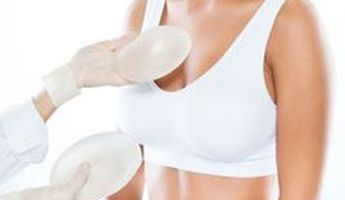
Find the best clinics for Breast Augmentation in Casablanca
With Medijump you can browse 1 facilities offering Breast Augmentation procedures in Casablanca. The cheapest price available is $2,134 in Marrakech
Breast Augmentation in Morocco
Price: $ 2,134
Breast Augmentation in Marrakech
Price: $ 2,134
Breast Augmentation in Casablanca
Price: $ 2,234
Hungary offers the best prices Worldwide
Price: $ 208
From 23 verified reviews
Zineb Solaihi, 22 November 2019
Clean clinic very lovely staff
Compare Before & After Photos of _procedure_photos.phpBreast Augmentation
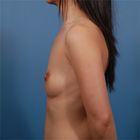

Full-side view
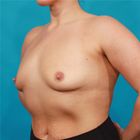
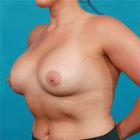
Half-side view
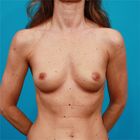
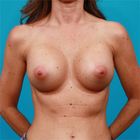
Front view
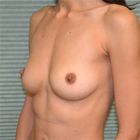

Half-side view

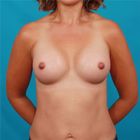
Front view
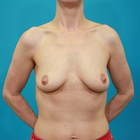
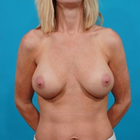
Front view
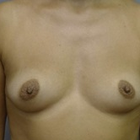

Front view

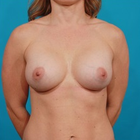
Front view
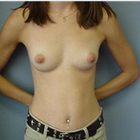
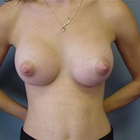
Front view
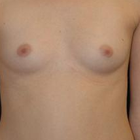
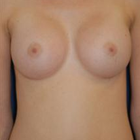
Front view
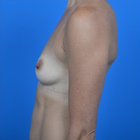

Full-side view
WHY US?
At Medijump, we're making medical easy. You can search, compare, discuss, and book your medical all in one place. We open the door to the best medical providers worldwide, saving you time and energy along the way, and it's all for FREE, no hidden fees, and no price markups guaranteed. So what are you waiting for?

Free

Best Price

Widest Selection

Risk-Free
What you need to know about Breast Augmentation in Casablanca

Breast augmentation, also known as a Boob Job or Breast Enlargement, is a surgical procedure aimed at increasing breast size, enhancing shape, or improving symmetry. In Casablanca, this procedure is carried out by board-certified plastic surgeons in accredited medical facilities, ensuring both safety and quality.
What is the cost of Breast Augmentation in Casablanca?
Prices in Casablanca are competitive, often offering savings without compromising on quality, especially when compared to costs in the US or Europe. However, factors such as surgeon’s fees, facility costs, and the type of implants affect the total cost.
What does a Breast Augmentation Procedure Involve?
The surgery involves placing breast implants under the breast tissue or chest muscles. Choices between saline or silicone implants can be made based on the desired feel and appearance. This is something your surgeon will discuss with you prior to even travelling.
How Long Should I Stay in Casablanca for a Breast Augmentation Procedure?
The length of stay in Casablanca for a Breast Augmentation is subject to various factors, such as your overall health, the specific nature of the procedure, and your individual recovery rate. Generally, Breast Augmentation surgery is an outpatient process, meaning you may be able to return home on the same day. However, a stay of up to two days might be necessary if your procedure is more intricate.
Although the hospital stay is relatively brief, it is advisable to remain in Casablanca for at least one-week post-procedure. This timeframe allows for initial recovery and a follow-up appointment with the surgeon. Moreover, in the event of any complications, prompt medical assistance will be accessible. Thorough knowledge of the recovery process and its duration is crucial for proper preparation and managing stress during treatment.
What's the Recovery Time for Breast Augmentation Procedures in Casablanca?
Post-surgery, a recovery period of one to two weeks is generally required, with follow-up visits to the surgeon. It's crucial to follow all post-op instructions for optimal healing.
Experiencing swelling and discomfort following the operation is normal, both of which should gradually alleviate with time. You will be required to wear a compression garment, take prescribed medications, and maintain a healthy lifestyle for an effective recovery.
What sort of Aftercare is Required for Breast Augmentation Procedures in Casablanca?
Post-operative care is critical for the success of a Breast Augmentation. The initial recovery phase usually includes prescribed medications to alleviate pain and avert infection. Individuals can normally resume everyday activities within a few weeks, depending on their healing pace and bodily responses. However, it is advisable to refrain from vigorous activities for a minimum of six weeks post-procedure.
What's the Success Rate of Breast Augmentation Procedures in Casablanca?
In Casablanca, Breast Augmentation boasts a relatively high success rate, which contributes to its immense popularity among individuals seeking improvements in their physical appearance. Numerous patients have reported satisfaction and enhanced confidence after undergoing the procedure, making it a widely favoured cosmetic surgery.
Are there Alternatives to Breast Augmentation Procedures in Casablanca?
In Casablanca, there are several alternatives to the Breast Augmentation. If you're considering breast augmentation strictly for cosmetic reasons and prefer non-surgical options, various suitable methods are available. Alternatives include fat grafting, hormonal therapy, and natural remedies. Fat grafting, also known as fat transfer, involves removing fat from different body parts and injecting it into your breasts. This approach is regarded as safer because it employs the body's tissue, minimizing complications.
What Should You Expect Before and After the Procedure?
Prior to the procedure, your surgeon will discuss your expectations and the anticipated outcomes of your Breast Augmentation. The preoperative consultation comprises an in-depth conversation about your medical history, a physical examination, and an outline of the procedure and postoperative care. Open and candid communication with your healthcare provider is crucial at this stage to ensure the treatment matches your objectives.
Post-procedure, initial swelling and discomfort are normal and can be managed with prescribed medication. It's vital to adhere to your surgeon's post-operative guidelines, which include caring for surgical incisions, taking prescribed medications, and attending follow-up appointments. As swelling subsides and incision lines fade gradually, your enhanced breast profile will become apparent.
Keep in mind that the decision to pursue a Breast Augmentation is deeply personal and should not be made hastily. Allocate time to consider the advantages and drawbacks, and ensure you are well-informed.
What are the Risks and Complications of Breast Augmentation Procedures in Casablanca?
As is the case with any surgical intervention, Breast Augmentation comes with its own set of risks and potential complications that need to be considered. These may include infections, bleeding, alterations in nipple or breast sensations, implant leakage or rupture, development of scar tissue, and unsatisfactory outcomes that could necessitate further surgeries.
Some individuals may also encounter complications tied to anesthesia, such as respiratory problems and reactions to medication. The psychological ramifications should not be overlooked, considering surgical procedures can impact mental well-being. An extensive conversation with your healthcare provider about these potential risks remains a key component in making an informed choice.
How to Prepare for Breast Augmentation in Casablanca?
Thorough preparation plays a significant role in the success of your Breast Augmentation. Before the surgery, you must have detailed conversations with your surgeon about your medical background, allergies, current medications, and lifestyle habits such as smoking or alcohol consumption. You may need to cease certain medications and habits, including smoking, weeks before the procedure, as they can influence the healing process.
Practical preparations like organizing for someone to be with you on the day of the surgery, scheduling sufficient time off work for recovery, and establishing a comfortable space at home for recuperation can contribute to a smoother post-operative phase. Your surgeon's team will also advise you on pre-operative fasting and hygiene guidelines.
What are some Common Misconceptions about Breast Augmentation?
Despite its widespread popularity, numerous misconceptions surround the Breast Augmentation. One such misconception asserts that breast implants are permanent. In actuality, breast implants may require replacement after 10-15 years, with the specific timeframe depending on individual health and lifestyle factors. Another false assumption is that breast augmentation solely serves vanity purposes. In reality, many patients undergo this procedure following mastectomy or as part of gender-affirming surgery.
A further common myth suggests that breast augmentation hinders breastfeeding. While a few instances might affect breastfeeding, the majority of individuals with breast implants can successfully breastfeed.
Whilst the information presented here has been accurately sourced and verified by a medical professional for its accuracy, it is still advised to consult with your doctor before pursuing a medical treatment at one of the listed medical providers
No Time?
Tell us what you're looking for and we'll reachout to the top clinics all at once
Enquire Now

Popular Procedures in Casablanca
Prices Start From $834

Prices Start From $500

Prices Start From $93

Prices Start From $85

Prices Start From $477

Prices Start From $931

Recommended Medical Centers in Casablanca for Breast Augmentation

- Interpreter services
- Translation service
- Religious facilities
- Medical records transfer
- Medical travel insurance
- Health insurance coordination
- TV in the room
- Safe in the room
- Phone in the room
- Private rooms for patients available

- Interpreter services
- Translation service
- Religious facilities
- Medical records transfer
- Medical travel insurance
- Health insurance coordination
- TV in the room
- Safe in the room
- Phone in the room
- Private rooms for patients available

- Interpreter services
- Translation service
- Religious facilities
- Medical records transfer
- Medical travel insurance
- Health insurance coordination
- TV in the room
- Safe in the room
- Phone in the room
- Private rooms for patients available

- Interpreter services
- Translation service
- Religious facilities
- Medical records transfer
- Medical travel insurance
- Health insurance coordination
- TV in the room
- Safe in the room
- Phone in the room
- Private rooms for patients available

- Interpreter services
- Translation service
- Religious facilities
- Medical records transfer
- Medical travel insurance
- Health insurance coordination
- TV in the room
- Safe in the room
- Phone in the room
- Private rooms for patients available

- Interpreter services
- Translation service
- Religious facilities
- Medical records transfer
- Medical travel insurance
- Health insurance coordination
- TV in the room
- Safe in the room
- Phone in the room
- Private rooms for patients available

- Interpreter services
- Translation service
- Religious facilities
- Medical records transfer
- Medical travel insurance
- Health insurance coordination
- TV in the room
- Safe in the room
- Phone in the room
- Private rooms for patients available

- Interpreter services
- Translation service
- Religious facilities
- Medical records transfer
- Medical travel insurance
- Health insurance coordination
- TV in the room
- Safe in the room
- Phone in the room
- Private rooms for patients available

- Interpreter services
- Translation service
- Religious facilities
- Medical records transfer
- Medical travel insurance
- Health insurance coordination
- TV in the room
- Safe in the room
- Phone in the room
- Private rooms for patients available

- Interpreter services
- Translation service
- Religious facilities
- Medical records transfer
- Medical travel insurance
- Health insurance coordination
- TV in the room
- Safe in the room
- Phone in the room
- Private rooms for patients available
Breast Augmentation in and around Casablanca
About Casablanca
Casablanca is the largest city in Morocco and is located in the central-western part of the country. Many local and international companies set up their headquarters in this city, making it the primary industrial zone of the country. Casablanca might be the least popular tourist destination in the country, but take a closer look, it does have a lot of hidden gems. Tourists will find many astonishing things to see here. From beaches, markets, culture, to Art Deco architecture, this city is definitely worth a visit.
In line with Morocco’s emerging medical tourism, Casablanca welcomes an increasing number of medical tourists each year. The city is considered to be the most developed market for medical tourists, which in turn as made it one of the leading destinations for medical tourism in Africa. The medical system is divided into two sectors, public and private. The city is known for its modern medical facilities equipped with high-tech equipment. People from the Middle East, Europe, and the United States choose the city for cosmetic surgery and dental procedures, while people from other African countries with inferior medical centers come to have better healthcare. For medical tourists from Western countries, medical treatment in Casablanca is a lot more affordable.
Popular Areas in Casablanca
Casablanca is the main gateway to Morocco and despite only having a few tourist attractions; visitors will find some gems after a little exploration.
- Hassan II Mosque was completed in 1993 and built on a platform overlooking the Atlantic Ocean. Covering around two hectares in size and can accommodate more than 100,000 worshippers, it is the second-largest mosque in the world. The dramatic location combined with the beautiful architecture offers a unique experience of praying.
- The Medina or the old city district is a perfect place to wander around. The maze-like alleyways hide many things waiting to be discovered. Tourists can experience the local’s daily life, have some tasty food in one of the cafes, find traditional treasures in one of its shops, or just stroll around and admire its beauty.
- Cathedral du Sacre Coeur may have been left to waste away in the past decades, but tourists can still see its beautiful structure and architecture. The guardian will sometime let tourists inside to get a sense of the building’s interior. The architecture is a perfect mix of European and Moroccan style.
- Central Market is the place for tourists who want to shop and it is a bustling market where locals buy and sell groceries, but tourists usually come for Morocco’s famous slippers or solely for an opportunity to get amazing photos. Do a little haggling and take home some beautiful local souvenirs.
- Corniche or beachfront district is located in the same region as the Hassan II Mosque. The shoreline is filled with luxury restaurants, hotels, and beach clubs. There is also a public beach packed with surfers and swimmers. During sunny days, especially on weekends, people come to picnic on the beaches, have a refreshing dip in the sea, or splash around in swimming pools.
Weather and Climate in Casablanca
The weather in this charming city can be quiet hot as it has a hot-summer Mediterranean climate. Thanks to the cool Canary current off the Atlantic coast, there are always cool breezes even during the hottest days. The summer generally starts in June and ends in August. June is the driest month in Casablanca and August is the hottest month with an average temperature of around 26 °C. The temperature will decrease in October and the average rainfall will increase in December. Winter starts in December and visitors can expect January to be the coldest month with the temperature ranging from 7 °C to 17 °C. February experiences a lot of rain, making it the wettest month of the year.
Getting Around in Casablanca
Casablanca is home to the country’s primary international airport: Casablanca's Mohammed V International Airport. It is the busiest airport in Morocco, located in Nouaceur Province and the airport operates both domestic and international flights which connect the city to many major cities in the Middle East, America, and Europe. Several budget airlines such as Air Arabia Maroc, Transavia Airlines, and Pegasus Airlines operate flights to and from this airport.
There are plenty of options to get around Casablanca and tourists can try the tram to get a good look at the city. The tram operates from 06.00 AM to 10.30 PM. The line connects some of the main neighborhoods and consists of 48 stops. The most inexpensive way to get around the city is by bus and it costs around 5 MAD. It is best to begin your journey at the designated stops along each bus route instead of stopping a bus in transit.
Taxis are widely available and there are two kinds of taxis: The Red taxi (Petit Taxi) or the White Taxi. The red taxi is a shared taxi, typically by four passengers. The White taxis act like buses with a set route and a fixed price, but the ride is much faster than the bus and you should always pay the driver at the start of your trip.
Tourist Visas in Casablanca
Citizens of 66 countries including Australia, New Zealand, the United States, the European Union, and Japan can enter and stay in the country for up to 90 days without a visa. Citizens of Mali, Guinea, and the Republic of the Congo do not need a visa to enter but must obtain an Electronic Travel Authorization. It is best to always check the current regulations to the Moroccan Embassy or Consulate in your country.
Additional Information
- Local Currency: Moroccan Dirham (MAD) is the official currency. The exchange rate from 1 USD is 9.70 MAD.
- Money & Payments: The easiest way to access money is by the ATMs which can be found easily around the city. Credit cards are mostly accepted in high-end restaurants and hotels. Tipping can be mandatory sometimes.
- Local Language: The official language is Arabic and Berber. French is widely spoken and understood. While English is not widely spoken, there are many people who can speak English, especially in tourist areas.
- Local Culture and Religion: Most of the population are Muslims. Nevertheless, Christianity, Judaism, and Baha’i Faith are freely practiced.
- Public Holidays: The city celebrates Islam religious holidays such as Eid al-Fitr, Islamic New Year, and Prophet Muhammad’s Birthday.
Popular Searches
- Plastic Surgery in Thailand
- Dental Implants in Thailand
- Hair Transplant in Thailand
- Breast Augmentation Thailand
- Gastric Sleeve in Thailand
- Gender Reassignment Surgery in Thailand
- Laser Hair Removal in Bangkok
- Botox in Bangkok
- Dermatology in Bangkok
- Breast Augmentation in Bangkok
- Coolsculpting in Bangkok
- Veneers in Turkey
- Hair Transplant in Turkey
- Rhinoplasty in Turkey
- Stem Cell Therapy in Mexico
- Rhinoplasty in Mexico
- Liposuction in Mexico
- Coolsculpting in Tijuana
- Rhinoplasty in Korea
- Scar Removal in Korea
- Gastric Sleeve in Turkey
- Bone Marrow Transplant in India
- Invisalign in Malaysia
- Plastic Surgery in the Dominican Republic
- Tummy Tuck in the Dominican Republic
- Plastic and Cosmetic Surgery in Poland
- Rhinoplasty in Poland
- Hair Implant in Poland
- Dental Implants in Poland
- IVF in Turkey
